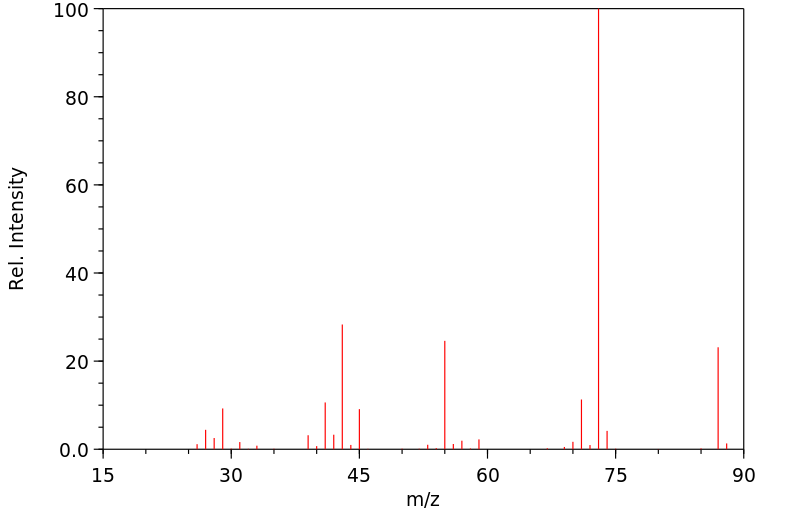代谢
在大鼠和一名人类志愿者吸入^(12)C-或^(13)C-标记的 tert-戊基甲基醚(TAME)后,对其生物转化进行了研究。此外,还研究了在大鼠经灌胃后的^(13)C-tert-戊醇的生物转化。尿液代谢物通过气相色谱/质谱(GC/MS)和^(13)C 核磁共振(NMR)进行鉴定。两只雄性和两只雌性大鼠分别暴露于2000 ppm的^(12)C 或^(13)C-TAME中6小时,收集48小时的尿液。通过^(13)C NMR、GC/MS 和 LC/MS/MS,根据^(13)C NMR信号的相对强度,鉴定出自由型和葡萄糖苷酸化的2-甲基-2,3-丁二醇以及tert-戊醇的葡萄糖苷酸酯作为主要的尿液代谢物。^(13)C NMR还表明存在几种次要代谢物,它们被鉴定为tert-戊醇、2-羟基-2-甲基丁酸和3-羟基-3-甲基丁酸。一名人类志愿者通过吸入2升气体采样袋中的^(13)C-TAME,初始浓度为27,000 ppm,持续4分钟,分析尿液中排出的TAME代谢物通过^(13)C NMR。在大鼠中鉴定的所有TAME代谢物也存在于人类尿液样本中。为了研究tert-戊醇的生物转化,三只雄性大鼠通过灌胃处理了250 mg/kg的^(13)C-tert-戊醇,溶解在玉米油中,并收集了48小时的尿液。尿液样本的^(13)C NMR显示了与^(13)C-TAME处理的大鼠尿液中相同的代谢物的存在。...
The biotransformation of tert-amyl methyl ether (TAME) in rats and one human volunteer after inhalation of (12)C- or (13)C-labeled TAME /was studied/. In addition, the biotransformation of [(13)C]-tert-amyl alcohol was studied in rats after gavage. Urinary metabolites were identified by GC/MS and (13)C NMR. Rats (two males and two females) were individually exposed to 2000 ppm ((12)C or (13)C-TAME for 6 hr, and urine was collected for 48 hr. Free and glucuronidated 2-methyl-2,3-butanediol and a glucuronide of tert-amyl alcohol were identified by (13)C NMR, GC/MS, and LC/MS/MS as major urinary metabolites on the basis of the relative intensities of the (13)C NMR signals. The presence of several minor metabolites was also indicated by (13)C NMR; they were identified as tert-amyl alcohol, 2-hydroxy-2-methylbutyric acid, and 3-hydroxy-3-methylbutyric acid. One human volunteer was exposed to an initial concentration of 27,000 ppm (13)C-TAME by inhalation for 4 min from a 2 L gas sampling bag, and metabolites of TAME excreted in urine were analyzed by (13)C NMR. All TAME metabolites identified in rats were also present in the human urine samples. To study tert-amyl alcohol biotransformation, male rats (n = 3) were treated with 250 mg/kg (13)C-tert-amyl alcohol dissolved in corn oil by gavage, and urine was collected for 48 hr. (13)C NMR of the urine samples showed the presence of metabolites identical to those in the urine of (13)CTAME-treated rats. ...
来源:Hazardous Substances Data Bank (HSDB)







